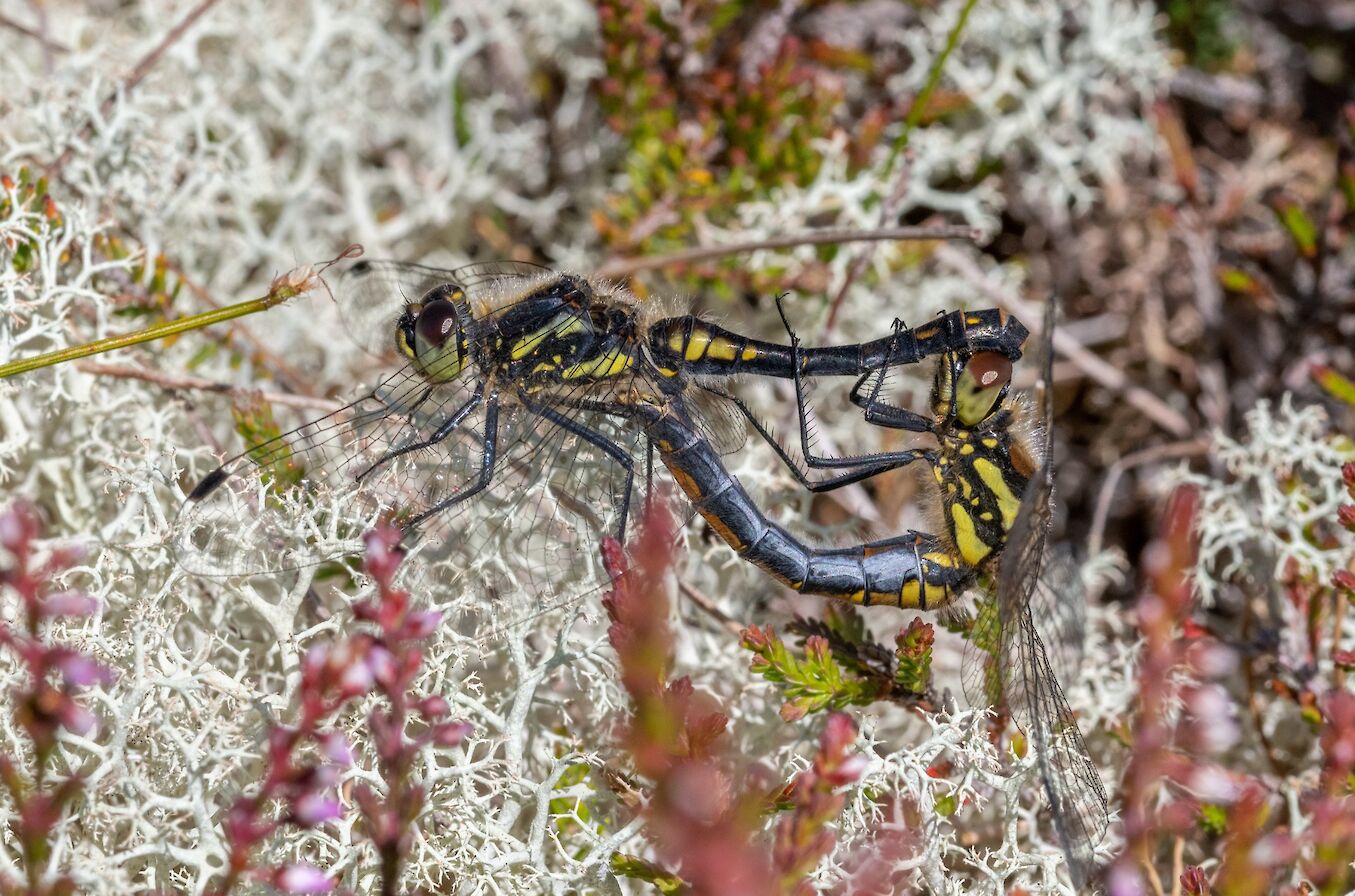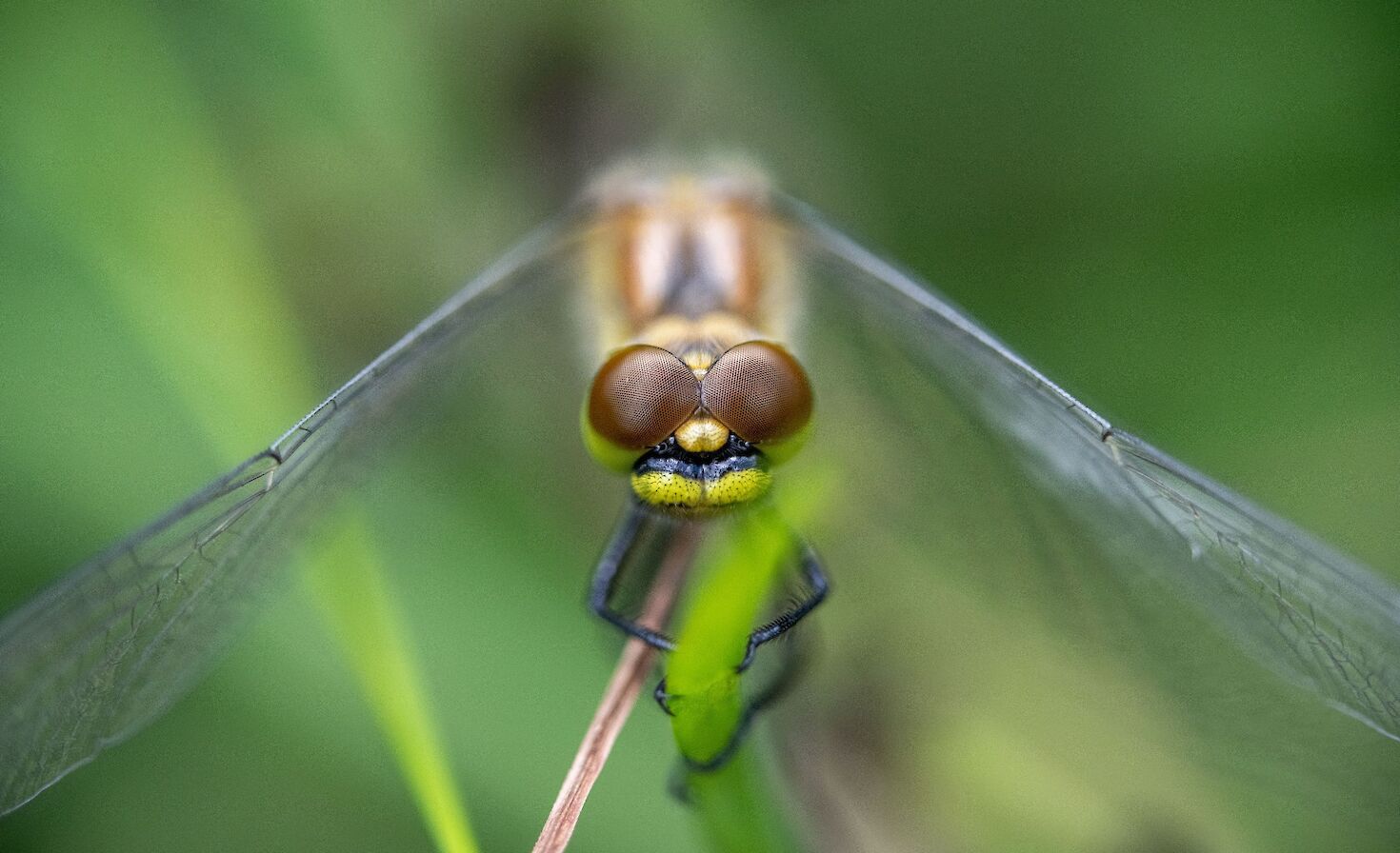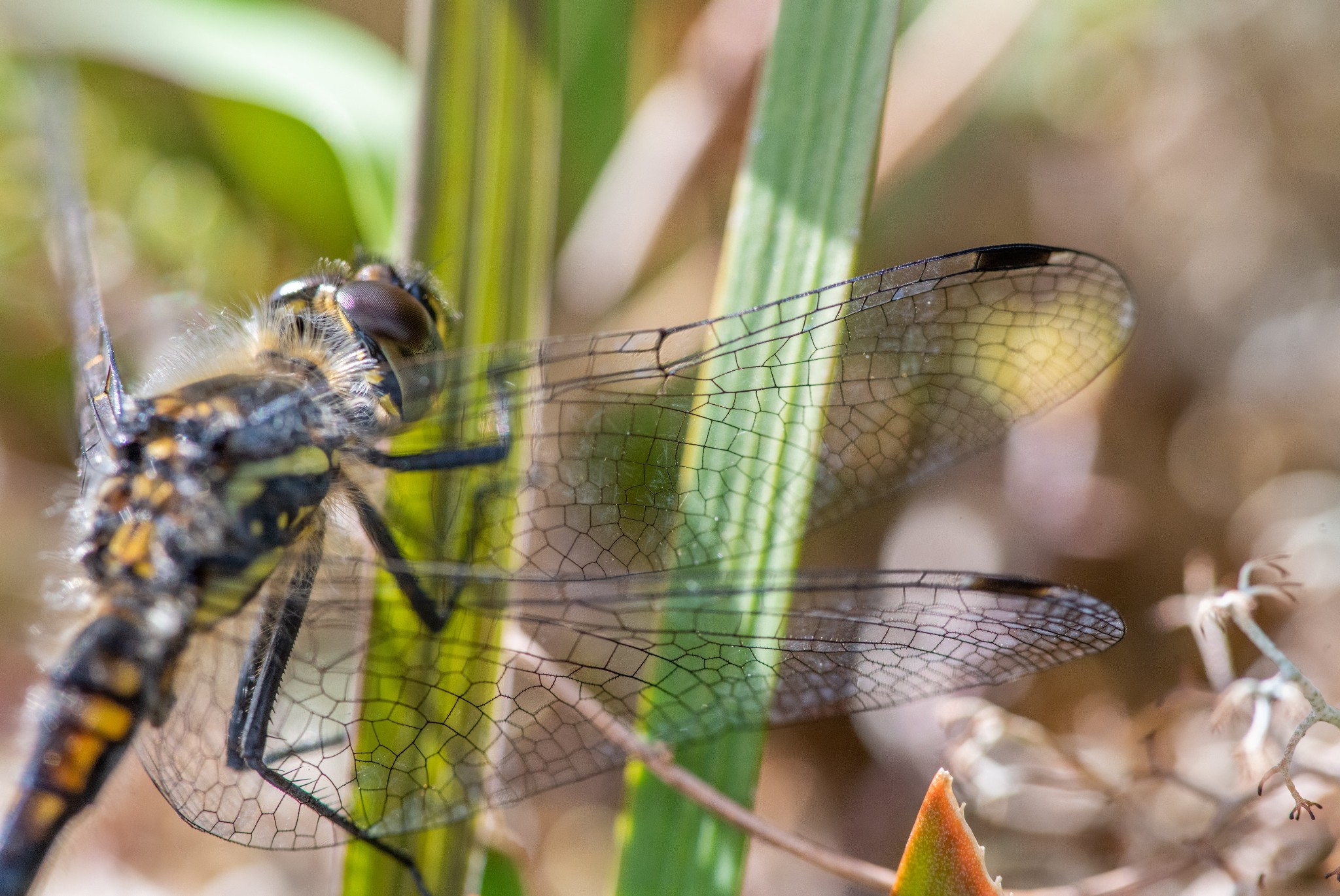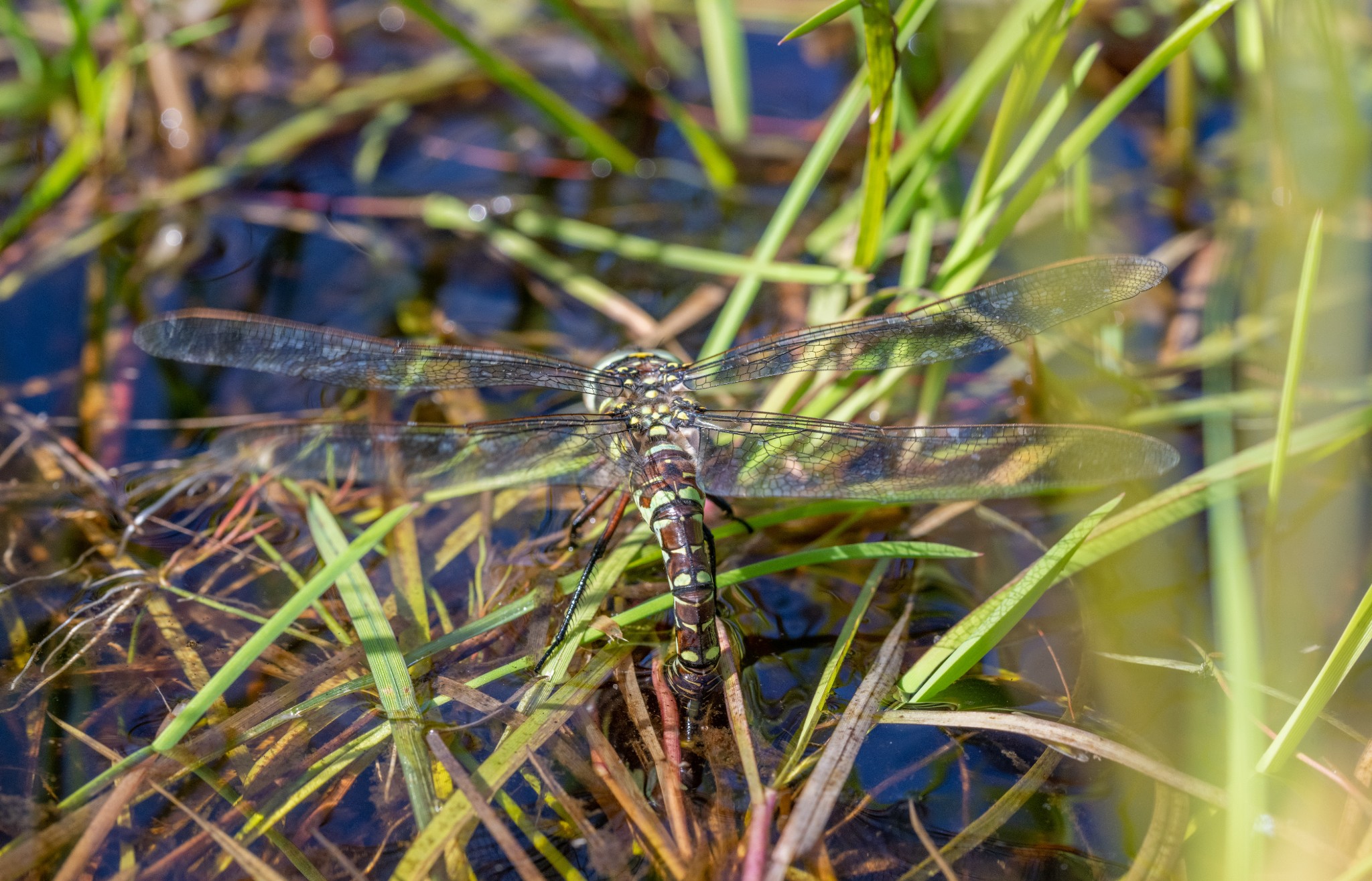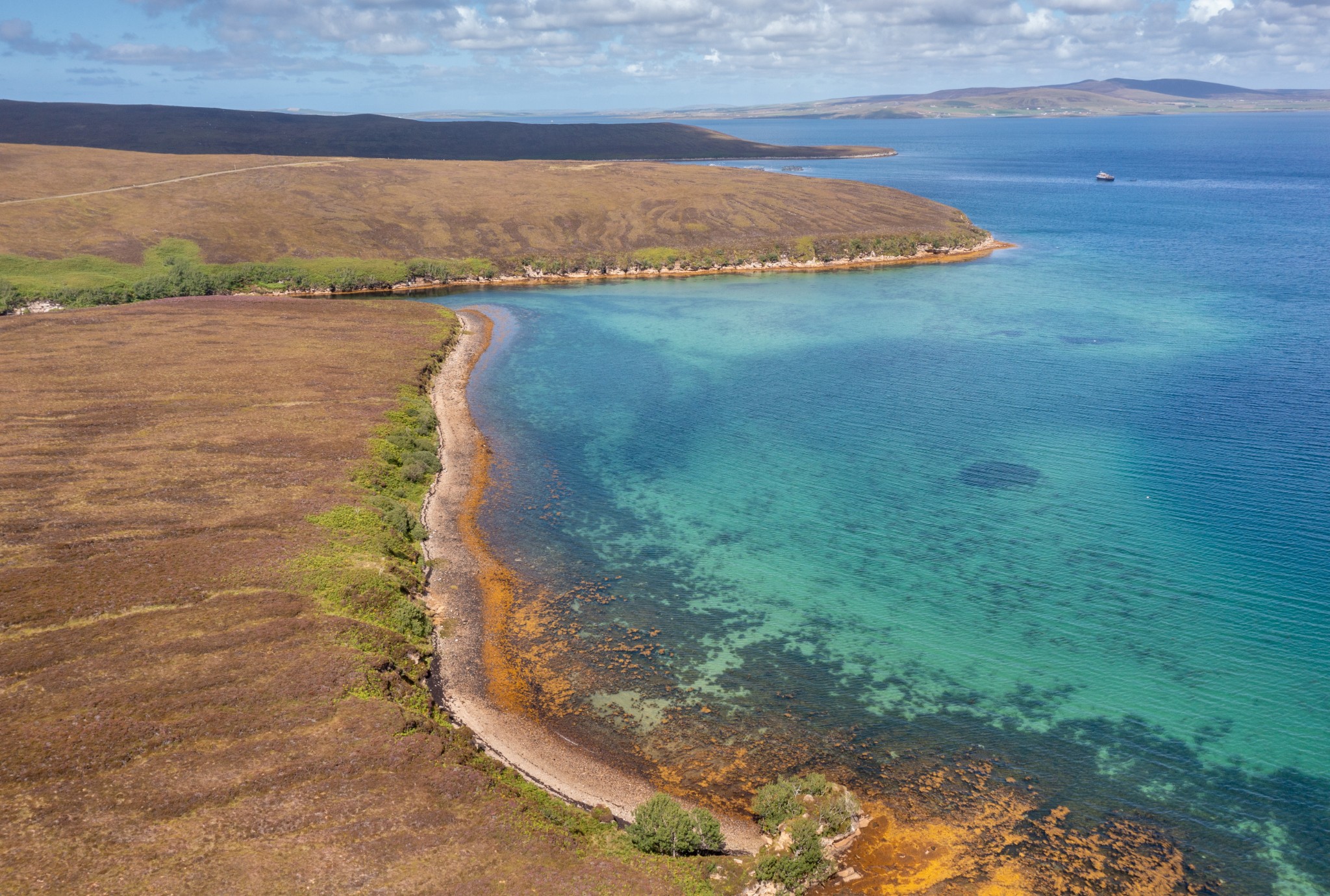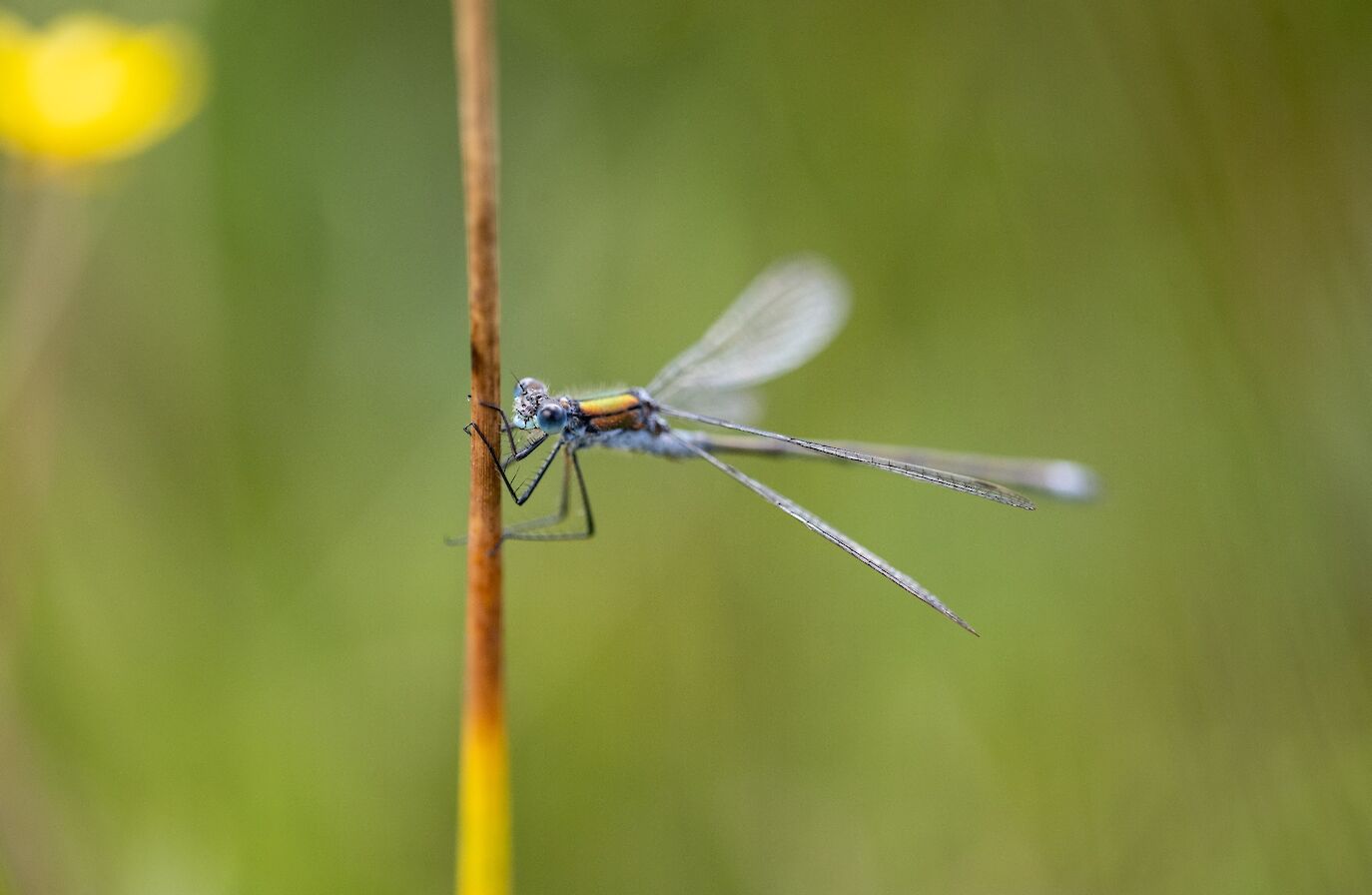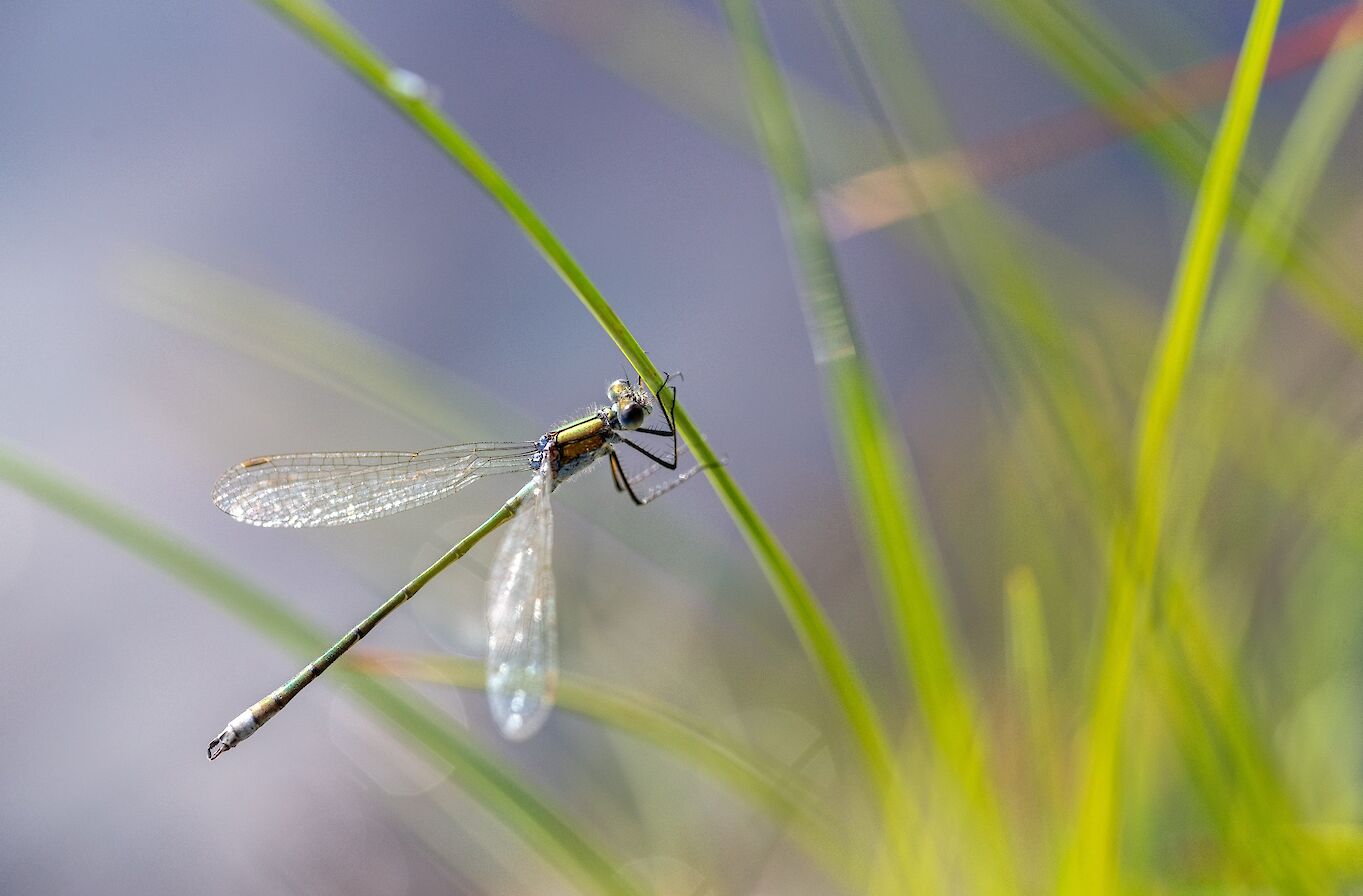Trolls and giants are said to live amongst the hills of Hoy, but this time I’m looking for dragons and damsels.
August is an excellent month to see our wonderful dragon and damselflies and so I’ve taken the short ferry ride through Scapa Flow to Lyness. They are to be found in numerous locations around Orkney but I don’t need any excuse to visit Hoy.
Sightings vary from year to year and are very much weather dependent so I’m not quite sure what I’ll find. However, dragonflies and damselflies are more visible on warm, calm days and today’s forecast is for plenty of sunshine. In fact, it’s a factor 50 kind of day but then my complexion is so Scottish that most days are a factor 50 day!
I take the short drive up the hill to Wee Fea with Lyness, Longhope and Flotta all visible beyond. It’s not the view I’m here for though, it’s a group of small and somewhat unspectacular looking pools that I’m interested in. My initial thoughts are that it’s going to be too windy but I needn’t have worried.
With my very first look at the first pool I can already see three of our resident species, two damselfly species and a dragonfly species - the emerald and common blue damselflies and the much larger black darter dragonfly. This is a good start as there are only eight breeding species of Odanata to be found in Orkney.
I sit and watch for a minute and there are three common blue damselflies all vying for the same vegetation close to the water’s edge. The males have beautiful vibrant turquoise and black markings but I don’t see any females, which tend to have more black on their abdomens and can be blue, green or brown. It’s several years since I’ve photographed any and I’m slightly surprised that I don’t remember how small damselflies are; think cotton buds with wings and you’re not far off.
Despite my best efforts I fail spectacularly and only achieve what I think of as a ‘record’ shot. These common blues seem very flighty, alighting at the slightest movement. I think perhaps they have a predisposition to these warm sunny days and so I leave this pool and onto the next in the hope of finding more amenable damselflies.
Truth be told I don’t need to move far. There are dragon and damselflies everywhere I look. Black darters are resting in the heather, and don’t discount the rocks and tracks around pools like these; the black darters in particular seem to like the warmth in them. Again, the male and female black darters look different and there’s no mistaking the male - as the name suggests he is predominantly black (though has patches of yellow, including three yellow spots on the side of the thorax) whilst the female is a wonderful amber yellow. A male is resting in the vegetation in front of me and allows a close approach. This gives me an opportunity to see his intricate delicate wings in detail.
I look up to see what appears to be two black darters flying in tandem but they’re heading off, so leg it after them. This isn’t usually my style and apologies to anyone who saw me running around the hills in a slightly crazed fashion. Thankfully they land not too far away in some soft lichen and heather and I can see that they are breeding - the male is in front and is gripping the female on her head with his tail claspers.
What I see next is just one of those perfect moments in nature, bringing a smile to my face. I put the camera down and just watch them. Still in tandem they fly to the water’s edge and the female breaks her tail from the male. They hover together and she gently taps her tail in the shallows, the gentlest of motions. She’s egg laying, or ovipositing - even the technical term is beautiful.
The moment is broken by another dragonfly flying past close by. This one is much larger and feels like it has much more of a ‘presence’. It’s a common hawker and it has landed almost in the water at the other side of the pool. Again, I dash around the other side to get a better view and can see that it too is ovipositing. Its style is different; half its tail is underwater, no doubt attaching its eggs to the submerged vegetation. I’m frustrated though, as it’s in a tricky location to photograph and partly obscured by the grass and sedges.
In fact, that is a recurring theme of my photography efforts throughout the day, dragonflies and damselflies landing in locations obscured by vegetation. When photographing at these pools I tend to wear a pair of waders, not that I have any intention of going up to my waist in peaty boggy water. It’s more so that I can kneel or sit on the damp edges knowing that I’ll stay dry. I’m using a new lens, a Sigma 105mm macro lens that allows me to stay a little bit farther away from the dragonflies than my Tamron 90mm would. It’s always nice to try and get to eye level with your subject but this is proving quite tricky given how close they are to the water’s surface.
I know of a few pools further north that I want to investigate before my late ferry home so leave Wee Fea and take the road winding its way up the east side of Hoy. It’s also a relief to get the waders off in what is starting to be a really warm day.
In weather like this it’s worth stopping at the Lyrawa Bay viewpoint looking out over Scapa Flow. Today is one of those big sky days, large cumulus clouds creating huge shadows over the landscape. The turquoise waters in Pegal and Lyrawa Bay contrast beautifully with the amber-coloured seaweeds such as egg wrack which thrive here in the sheltered bays. I do have one twinge of sadness as I drive north though - normally the coastline here would be alive with great skuas but today I only see one cruising past, such is the devastation wrought on this species by avian flu. A female hen harrier floating by raises my spirits.
The first species I see at my next pool is something of an Orkney success story. The emerald damselfly was first recorded nearby at Rackwick in 2010 and is now widespread in Hoy, as well as being recorded in Flotta and the Orkney mainland. I’ll pin my colours to the wall and say the male emerald damselfly is my favourite amongst the Orkney Odanata. With a metallic green thorax and tail fringed by sky blue, he cuts quite a dashing figure.
They are numerous at this pool and again I can see male and females in tandem. I try to get close to a female but she flies off. I needn’t have been annoyed with myself though. She lands back on the same leaf but this time with a fly in her mouth. It’s easy to forget given the dainty nature of damselflies in particular that they are supreme predators. Equipped with compound eyes and masters of the air, the midges around this pool don’t stand a chance.
However, it seems here they might not just be quite the top dog. I see something glinting on a sedge at the water’s edge and on closer inspection notice that a male emerald damselfly has succumbed to a spider’s web, the spider itself emerging to start ‘processing’ its prey.
It dawns on me that at first glance these heather clad hills can look a bit bleak and bare, but that’s far from the truth. To me, the ‘dark island’ is anything but. There is intense colour everywhere - you just have to look a bit harder. From the cobalt blue of the male emerald damselfly and the bright red carnivorous sundew plant, to the intense sunflower yellow of the Bog Ashpodel flower, there are jewels everywhere.
Find out more about Raymond’s work via his official website. You can also find him on Facebook, Twitter and Instagram.
